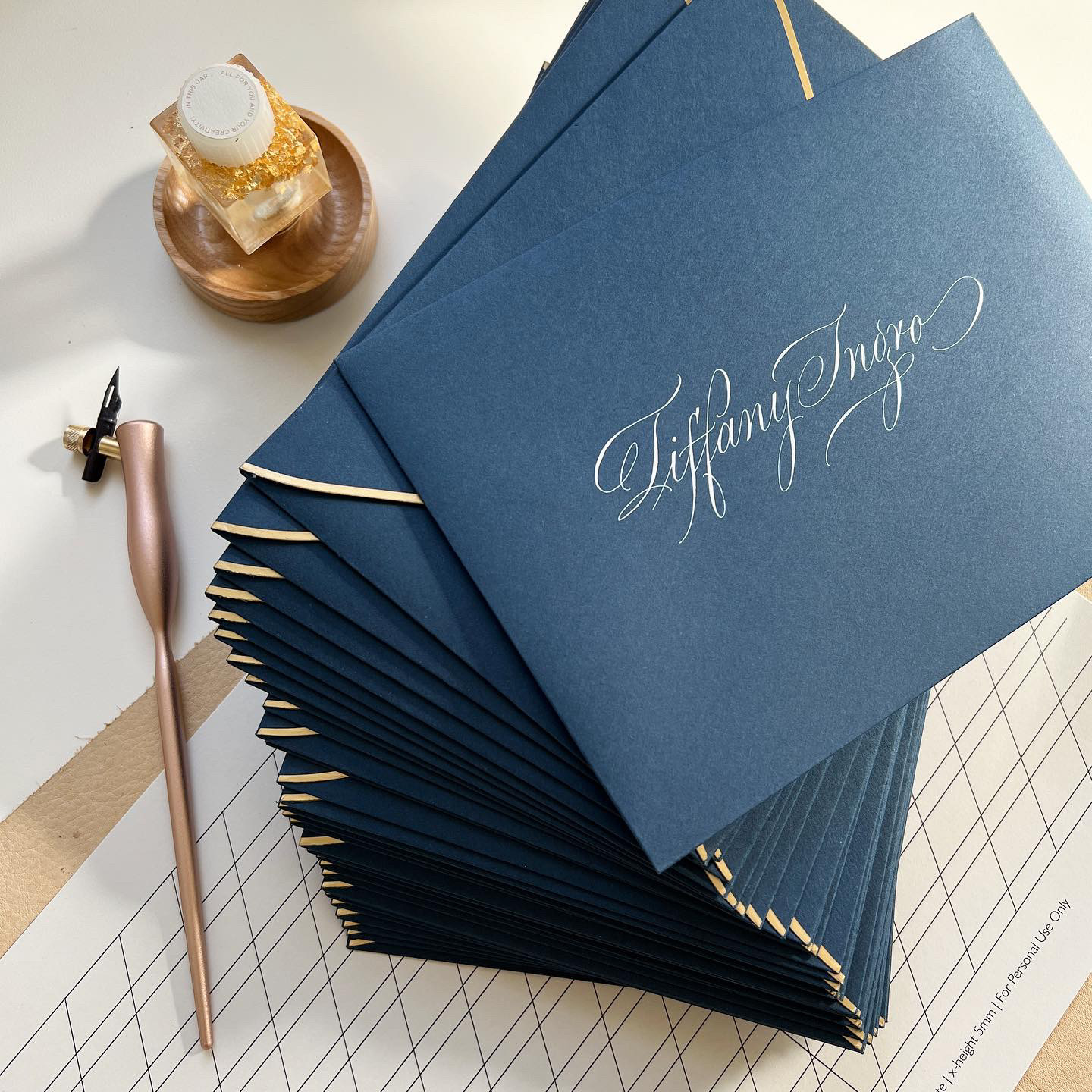#1 New Release in Calligraphy Guides on Amazon! 🎉
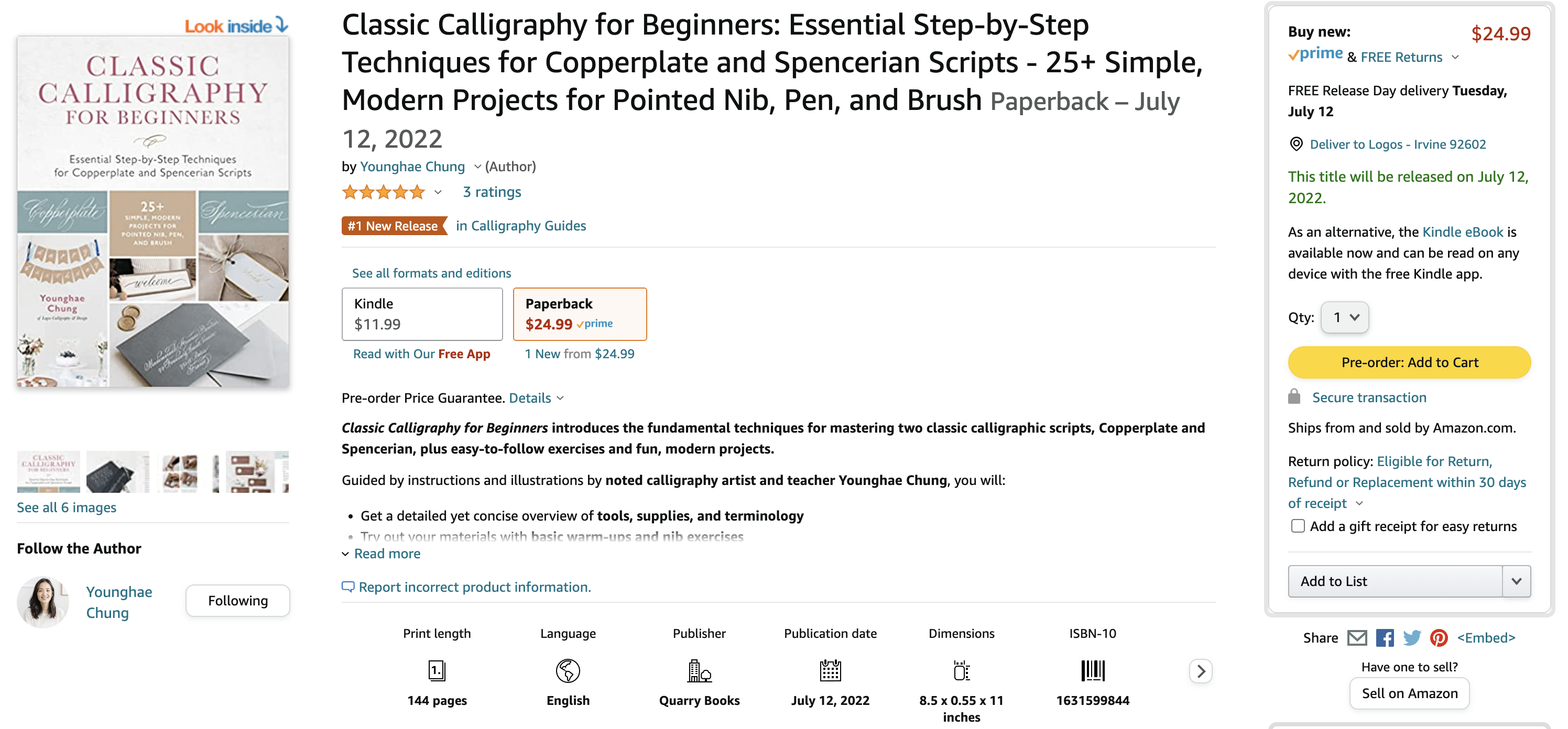
SO excited to see my book come up as #1 New Release in Calligraphy Guides on Amazon! :) It's because of YOU guys that my book is being seen and shared to so many. As you can imagine, the competition is so fierce on Amazon and I'm not sure how much longer it will stay #1, but regardless of the ranking...I am so grateful for every comment, every email, every DM that I've received over the past couple of months. Taking on this project came with much excitement but I also felt this tremendous weight wondering if I would do justice to this beautiful form of art. So your words of encouragement, kindness have really meant alot to me. THANK YOU 🙏🏼
I also received notice from the publisher that the co-edition team has already contracted the book to be translated into other languages. Eventually, the book will be available in:
![]() German/World
German/World![]() Korean/World
Korean/World![]() Dutch/World
Dutch/World![]() Spanish/Latin America excluding Cono Sur (Argentina/Chile/Uruguay) and Peru
Spanish/Latin America excluding Cono Sur (Argentina/Chile/Uruguay) and Peru![]() Spanish/Cono Sur and Peru
Spanish/Cono Sur and Peru
The publisher shared how ...
*NEW* Guidesheet for Ascending/Descending Stem Loops
I'm currently guiding my students through my Copperplate Foundations course and noticed that students have been struggling with consistency in their ascending/descending stem loops:


Below are some examples of students' homework sheets. If we're not careful, the loops can either become too narrow or too rounded:
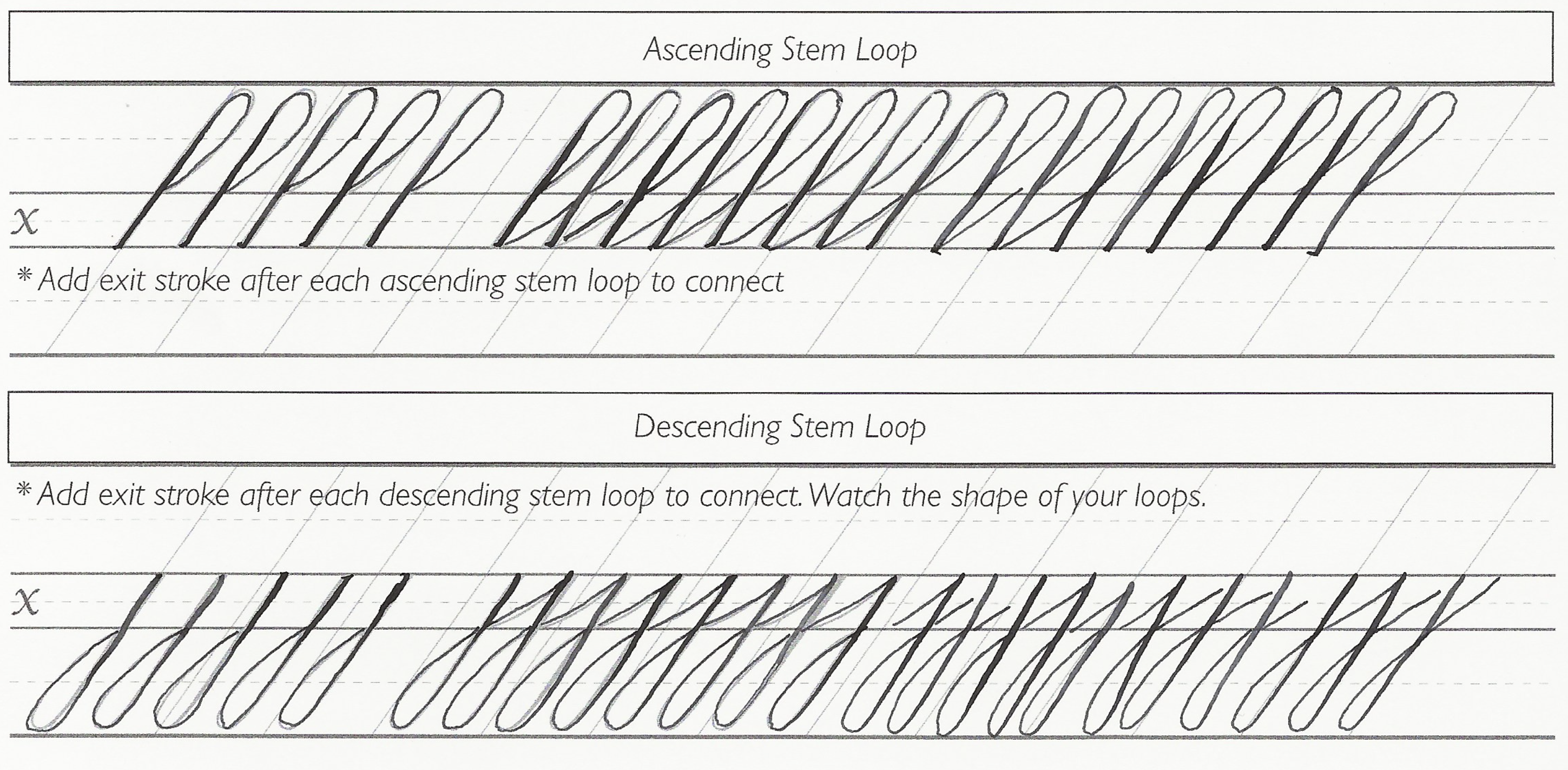
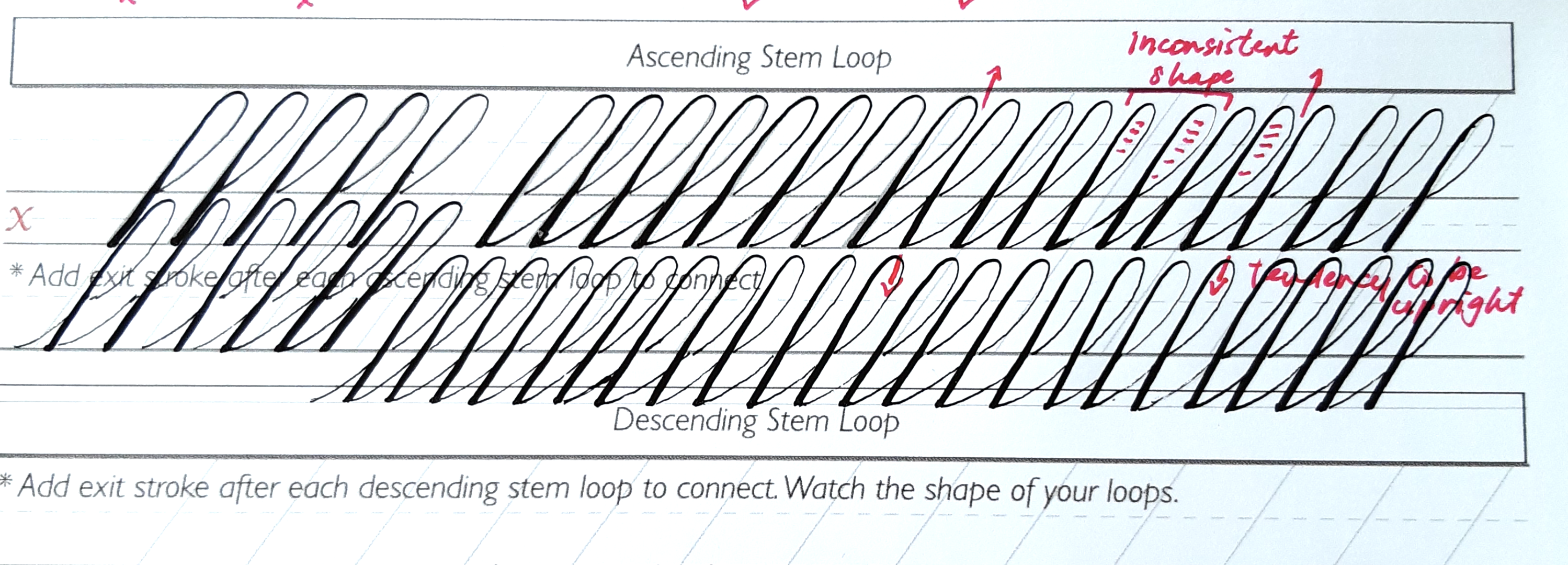
An important key to achieving consistency in the ascending and descending stem loops is to visualize an oval within the loop. Here is an example of lowercase letter 'g' and 'l' where I drew in an oval with a pencil before writing the letters with a red pen:
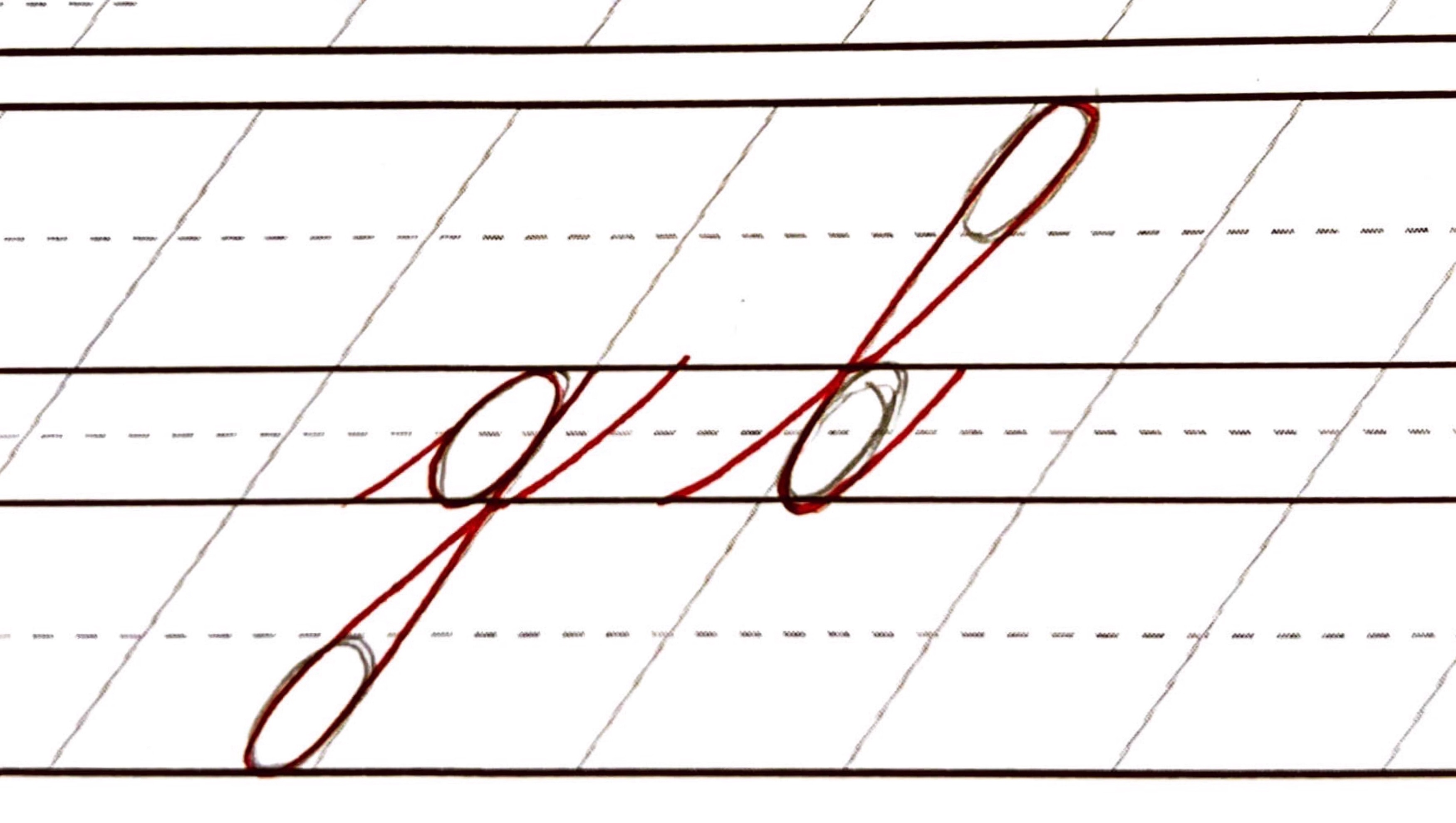
This demonstration gave me an idea to create a new guidesheet so you can use it to practice those stem loops! In the new guidesheet, I added ovals along the ascender and descender line so that you can practice both the ascending/descending stem loops. Remember that these ovals are meant to be used as a guide so it's okay if your stem loops don't contain the entire oval. Take your time, write slowly, practice, an...
Classic Calligraphy for Beginners - An Update
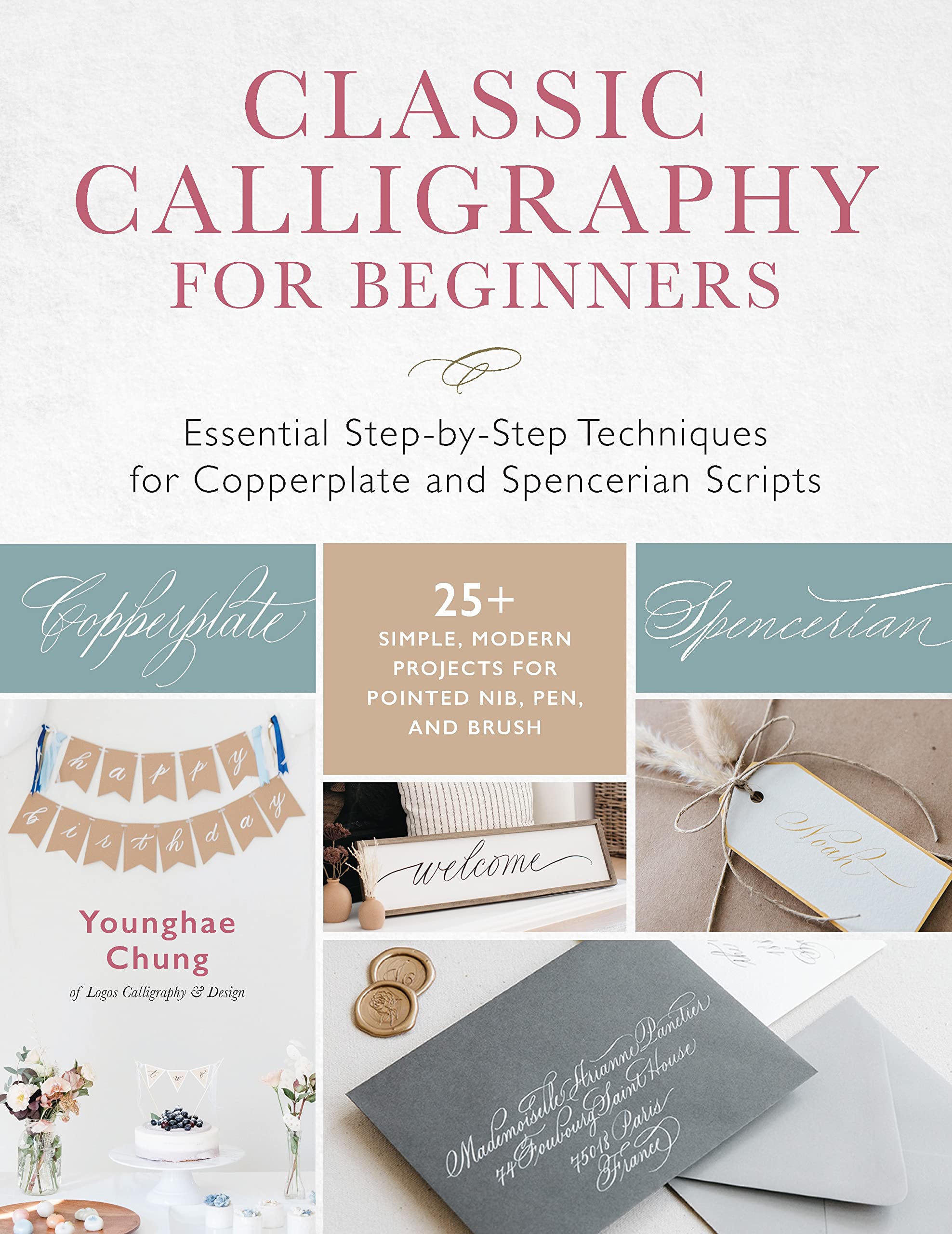
My new book "Classic Calligraphy for Beginners" will be releasing soon! Initially it was scheduled to release June 14th but I just heard from my publisher last week that due to unforeseen shipping delays, the pub date will be pushed back to July 12, 2022. The UK and ebook publication date will still remain as is! Of course I am a bit disappointed, but after working on it for over a year, waiting one more month will be worth it :) Thank you for your patience and understanding ❤️
As we count down together, I wanted to take this time to answer the following question I received recently: "What is the difference between your new book and your practice pads? Will your new book cover most of the materials in the practice pads?"
To help answer the question, let me show you the table of contents from the new book:
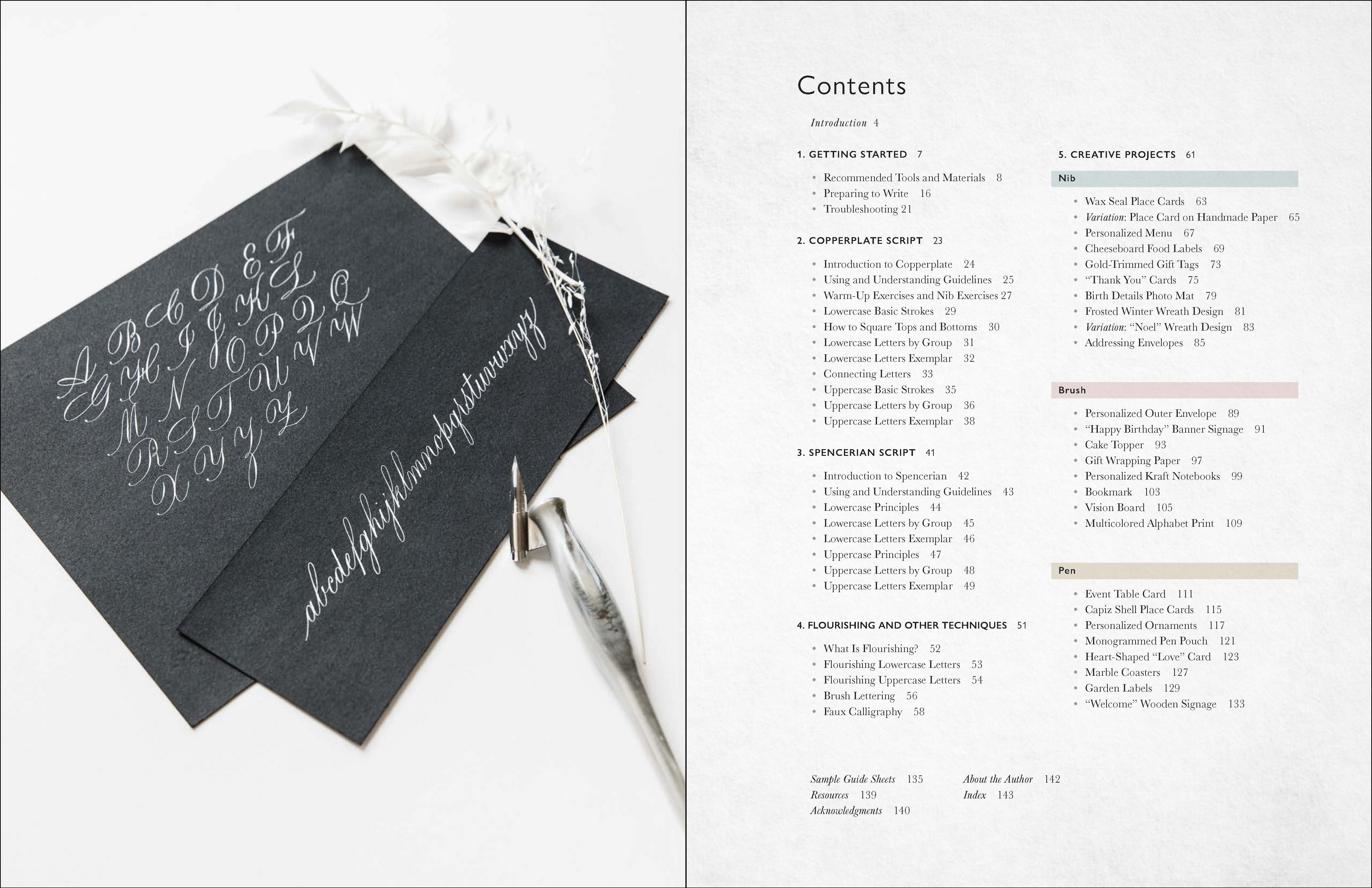
As you can see, the book will have some basic introduction to calligraphy, Copperplate, Spencerian, and a chapter that includes flourishing, brush lettering, and faux calligra...
Copperplate vs. Spencerian
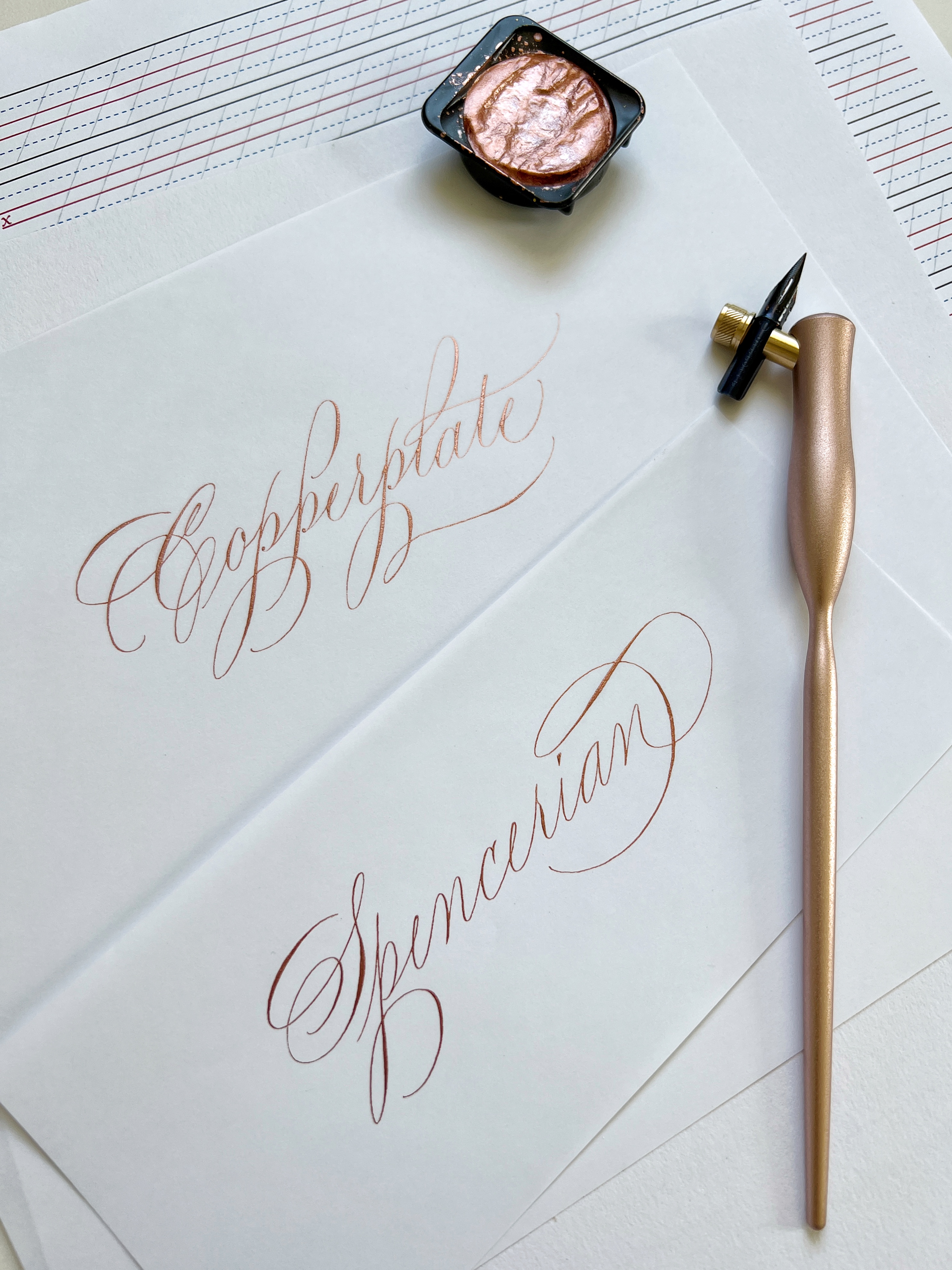
As I've been posting more of my Spencerian work on Instagram to gear up for my upcoming online course, I got a question recently asking what the difference is between Copperplate and Spencerian script.
Before we talk about the differences, let's talk about the similarities between these scripts:
- Copperplate and Spencerian are both written with a steel, flexible pointed nib. So, as long as you know how to write with a pointed nib, the transition and learning curve will be easier to go from one to another. I personally learned Copperplate first and then picked up Spencerian a year later, but you can also begin with Spencerian and move onto Copperplate. These scripts complement each other so wonderfully.
- Both scripts are written on a slant. The standard slant line is 55° for Copperplate and 52° for Spencerian. When teaching, I use the standard as our guide but the difference of 3° is so minor that when you eventually write without guidesheets, you can mix these scripts together (ex ...
STMABD = Small Things Make a Big Difference

With my Copperplate Foundations registration opening up around the corner on 4/19, this saying came to mind - "Small things make a big difference". That doesn't just apply to calligraphy but all part of our lives. I find that it's the seemingly small & mundane choices we make (from the food we eat to what we believe to be true in our minds) that will have the biggest impact in our lives.
This is my 8th year since embarking on this calligraphy journey and if there's any tip I would share to beginners, it would be to choose quality over quantity when it comes to practice times. Being intentional with the 20 minutes you have will be of greater value than spending 2 hours practicing mindlessly, which will lead to bad habits.
One way you can improve your script is to practice your pressure/release! Two things to keep in mind:
- We all have a unique hand. Some of us have a naturally light hand and others have a heavy hand. What does that mean? It means that for those who have a natural ...
Tips when using Finetec & Handmade Paper
As calligraphers, the words "Finetec" and "handmade paper" are no strangers to us. In fact, I actually got introduced to Finetec during my first Copperplate workshop back in 2014! My instructor had demonstrated writing our names with it and I was so mesmerized by the shimmer and how elegant it looked on paper. I bought my first palette right away and now I'm honored to be an Art Ambassador with Royal Talens who helps distribute Finetec in North America.
Finetec is a line of high quality watercolor and offers a variety of transparent, neon, pearlescent, iridescent, metallic colors that work beautifully for calligraphy.
How to use - Finetec comes in pans and in order to properly use it with a pointed nib, you will need to dilute it with water until you get a milk like consistency. Add a couple drops of distilled water directly onto the pan (I like to keep my water in a dropper bottle), mix with a brush, and load it onto the nib (both front and back!) until it covers the eye of the nib. ...
Brand Ambassador for Tom's Studio
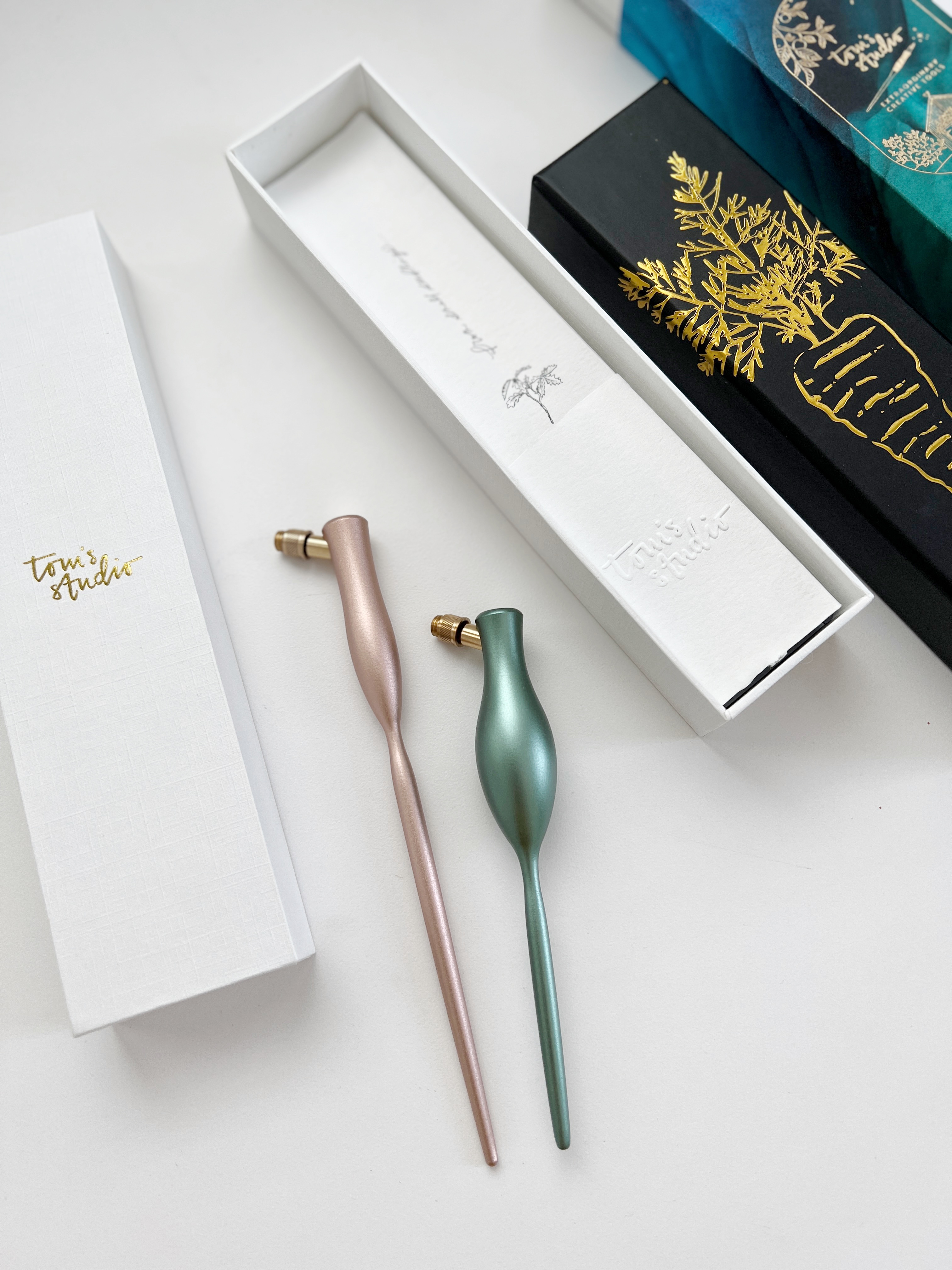
Hi!
It's been a while since my last blog post..but I'm excited to come back with an exciting announcement! I will be joining as a Brand Ambassador (BA) for Tom's Studio 🎉 If you haven't heard of them, they are a small business/brand run by Tom + his wife Gemma. They are quite a dynamic duo and produce some of the most beautiful pens that are made to last a lifetime. When Gemma reached out to see if I would be interested in joining as a BA, there was no question in my mind. I am so thrilled to partner with a brand that I can stand behind and look forward to sharing more collaborative projects with you this year.
For this post, I wanted to share my thoughts about their oblique penholders. I was able to write with them for a wedding project this week:
- The carrot pen is smaller than the standard pen, but weighs a bit more due to the thicker grip (Keep in mind that these pens are made of solid metal...so no wonder!). Some prefer a wider grip to alleviate hand cramps that may devel ...
All about Calligraphy Penholders!
With a growing number of penholders in the market, I wanted to share some personal recommendations for either absolute beginners or those who are interested in adding another holder to your collection!
GOOD BEGINNER HOLDERS ($ - Inexpensive/Budget Friendly)
When you are just starting out, you don't need to spend hundreds of dollars on a new holder. I recommend the following either the Dual Workshop Holder ($6.49) or Moblique holder ($9-$13). They are both inexpensive, have metal flange, and ability to use for either oblique or straight holder. To use as a straight holder, you simply take out the flange and insert the nib into the inner circle. The Moblique holder comes in beautiful colors and has an inner nib compartment that may come in handy when you are on the go!
Here are other budget friendly holders that are offered under $20:
- Pointed Oblique Holder ($14.95) - These wooden holders are fitted for Nikko G for similar nibs
WOODEN HOLDERS ($-$$ - Reasonably Priced)
If you ...
Using Gouache to make Calligraphy Ink!
Did you know you can use gouache to make your own calligraphy ink? It's a great way to add beautiful colors to your piece! I also enjoy practicing with colored ink to switch things up. Arteza recently sent me their gouache and watercolor paper to test and I'm happy to share that I am really pleased with their color options, quality, and how the ink does not smear after writing on their watercolor paper.
Here is a quick tutorial on how to make your own ink:
*Disclosure - Some of the links below are affiliate links, meaning, at no additional cost to you, I will earn a small commission if you click through and purchase. However, know that I will only recommend supplies that I use and stand behind. Thank you for your support!
Materials You Need
- Ink Jar - I love using dinky dips for when I need a small batch of colored ink. These are tiny containers that fit your nib perfectly. The one that is shown here is from M.Lovewell and you can get it here. If you are working on larger env ...
My Set Up as a Left Handed Calligrapher
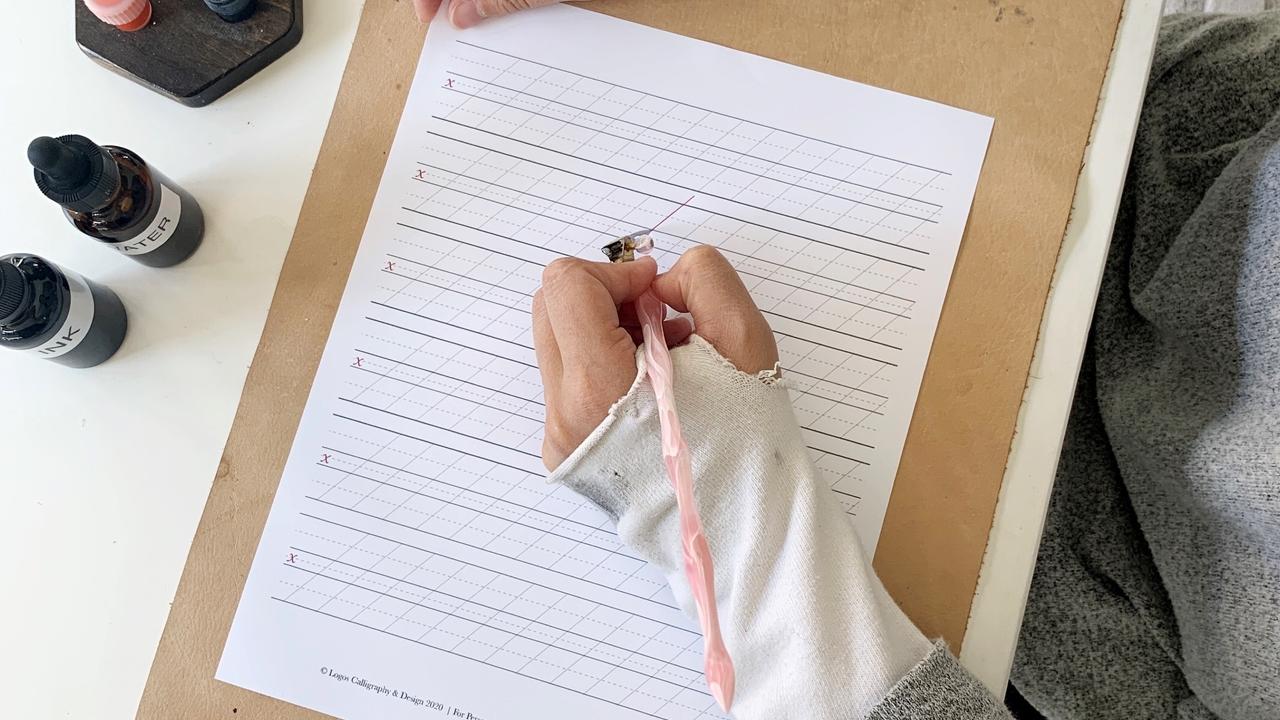
I often get questions asking "How do you angle your paper? Do you use a left oblique? Straight holder?", so I wanted to help answer those questions here. FYI- for my everyday handwriting, I underwrite (keep my wrist under the baseline) and hold the paper at about 45 degrees to the right.
Switching from Straight to Oblique
After taking my first Copperplate workshop in November 2014, I decided to stick to the straight holder because I could not find the right paper angle and felt extremely frustrated using an oblique. Even after writing with a straight holder for a year, I continually struggled with being able to execute smooth upstrokes (because it was going away from my body) and flourishes..but still pressed on and practiced.
In February 2016, I had an opportunity to meet Master Penman Michael Sull at the LA Pen Fair:
As I shared my struggles, he encouraged me to try the oblique again, but this time- the paper angle was at 90 degrees. One of the things that stayed with me from our...

